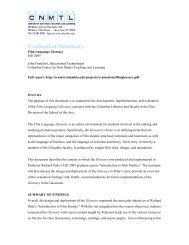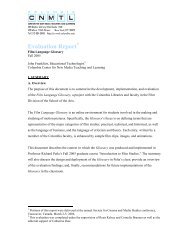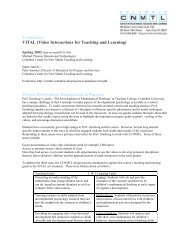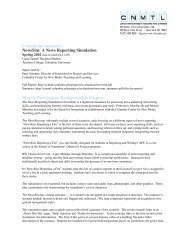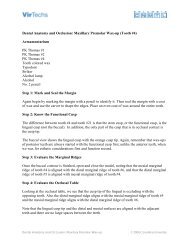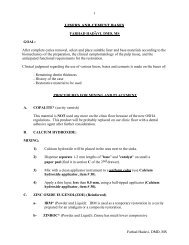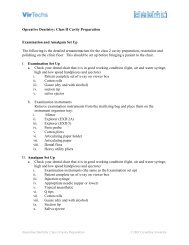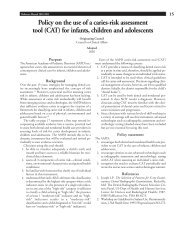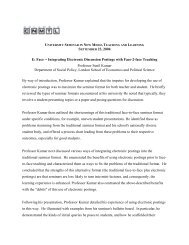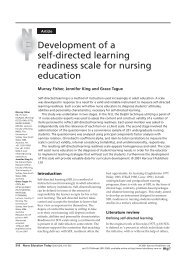Transcript for Stainless Steel Crown Restoration - Columbia University
Transcript for Stainless Steel Crown Restoration - Columbia University
Transcript for Stainless Steel Crown Restoration - Columbia University
Create successful ePaper yourself
Turn your PDF publications into a flip-book with our unique Google optimized e-Paper software.
Step 8: Finishing and Polishing<br />
The only thing left to do is to finish and polish and then cement. Lift the crown off again. What<br />
we've done in shortening the length of the crown is to remove the knife-edge finish that it had.<br />
You can see that there's a blunt margin where the stainless steel crown adapts to the tooth. What<br />
we need to do is to take the heatless stone again and using an angle, recreate the knife-edge in the<br />
last 1 mm of the crown. We're not shortening it, just re-creating a knife-edge finish to the<br />
margin.<br />
Remove the heatless stone, switch to a burlew wheel and repeat the same thing, creating a<br />
smooth polished finish. It removes the scratches and polishes the bevel.<br />
Step 9: Cementation<br />
Now we are prepared <strong>for</strong> cementation. We have our crown ready to go and a dry isolated field.<br />
Cementation of the crown is achieved by using a glass ionomer like Ketac cement. It is important<br />
to follow manufacturer's mixing instruction and to work fast as the cement sets fairly rapidly.<br />
You want a luting consistency of cement and this material is going to start setting as soon as you<br />
finish spatulating. So you want to have everything prepared. The rubber dam may be removed at<br />
this point and cotton roll isolation is achieved. Use an adequate amount of cement just enough to<br />
fill up the crown.<br />
Step 10: Check Occlusion and Finish<br />
Have the patient bite the crown into occlusion. Do not use a bite stick or a cotton roll. Biting on a<br />
roll or bite stick is going to create hypo-occlusion and over-seat the crown. When the cement<br />
reaches a gelled state you begin a removal of the excess material proximally and subgingivially.<br />
This may be achieved with a carving instrument and dental floss. Floss the interproximal areas to<br />
remove excess cement. Please remember that time is of essence as the cement sets rapidly.<br />
Case completed.<br />
Pediatrics: <strong>Stainless</strong> <strong>Steel</strong> <strong>Crown</strong> <strong>Restoration</strong> Page 4 of 4




